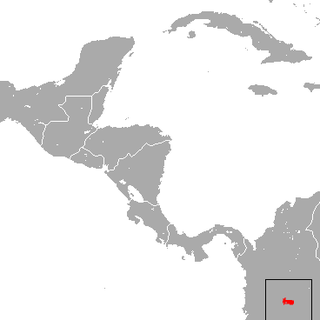
The Magnoliaceae are a flowering plant family, the magnolia family, in the order Magnoliales. It consists of two subfamilies: Magnolioideae, of which Magnolia is the best-known genus, and Liriodendroidae, a monogeneric subfamily, of which Liriodendron is the only genus.

Magnolia is a large genus of about 210 flowering plant species in the subfamily Magnolioideae of the family Magnoliaceae. It is named after French botanist Pierre Magnol.

The magnolia warbler is a member of the wood warbler family Parulidae.

Magnolia virginiana, most commonly known as sweetbay magnolia, or merely sweetbay, is a member of the magnolia family, Magnoliaceae. It was the first magnolia to be scientifically described under modern rules of botanical nomenclature, and is the type species of the genus Magnolia; as Magnolia is also the type genus of all flowering plants (magnoliophytes), this species in a sense typifies all flowering plants.

Magnolia grandiflora, commonly known as the southern magnolia or bull bay, is a tree of the family Magnoliaceae native to the southeastern United States, from Virginia to central Florida, and west to East Texas. Reaching 27.5 m (90 ft) in height, it is a large, striking evergreen tree, with large dark green leaves up to 20 cm long and 12 cm wide, and large, white, fragrant flowers up to 30 cm (12 in) in diameter.

Magnolia champaca, known in English as champak, is a large evergreen tree in the family Magnoliaceae. It was previously classified as Michelia champaca. It is known for its fragrant flowers, and its timber used in woodworking.
In botanical nomenclature, autonyms are automatically created names, as regulated by the International Code of Nomenclature for algae, fungi, and plants that are created for certain subdivisions of genera and species, those that include the type of the genus or species. An autonym might not be mentioned in the publication that creates it as a side-effect. Autonyms "repeat unaltered" the genus name or species epithet of the taxon being subdivided, and no other name for that same subdivision is validly published. For example, Rubus subgenus Eubatus is not validly published, and the subgenus is known as Rubus subgen. Rubus.
Zootaxa is a peer-reviewed scientific mega journal for animal taxonomists. It is published by Magnolia Press. The journal was established by Zhi-Qiang Zhang in 2001 and new issues are published multiple times a week. From 2001 to 2020, more than 60,000 new species have been described in the journal accounting for around 25 % of all new taxa indexed in The Zoological Record in the last few years. Print and online versions are available.

The Colombian crake is a species of bird in the family Rallidae. It is found in Colombia, Ecuador, and Panama. Its natural habitats are subtropical or tropical seasonally wet or flooded lowland grassland and swamps.

The Flora of Colombia is characterized by 130,000 species of plants that have been described within Colombian territory.

The Eastern Cordillera small-footed shrew is a species of mammal in the family Soricidae. It is endemic to Colombia, where it is known from the western slopes of the central Cordillera Oriental at elevations from 1300 to 2715 m. It resembles C. colombiana. The species is only known from four individuals collected at two localities, the most recent record being from 1925.

The Colombian small-eared shrew is a species of mammal in the family Soricidae. It is endemic to Colombia, where it is known from the Cordillera Central in Antioquia Department at elevations from 1750 to 2800 m. It is found in montane forest and cultivated areas. It resembles C. brachyonyx.
Magnolia amazonica is a flowering evergreen tree of the family Magnoliaceae native to the lower western Amazon River Basin, including Peru and Brazil.
Magnolia rimachii is a small to medium-sized tree of the family Magnoliaceae commonly reaching 8 to 15 m high. It is found in the western lowland Amazon Basin tropical forest, in Ecuador and Peru, between 140–500 metres (460–1,640 ft) in elevation.

The Mistratoan yellow-shouldered bat, is a species of leaf-nosed bat indigenous to the Cordillera Occidental, in the Mistrato municipality in Risaralda, Colombia. Since existing information derives exclusively from the holotype, the status of the species, its environmental requirements, and the trend of the population are unknown.
Munidopsis echinata is a species of squat lobster, first found in deep waters off Taiwan. M. echinata is similar to M. colombiana, but differs by lacking an antennal spine on its carapace and having a rather longer antennal peduncle.

Stenorhynchosaurus is an extinct genus of pliosaurid plesiosaurs which lived in South America during the Early Cretaceous. The type species and only known is Stenorhynchosaurus munozi.
Arthropeina is a fly genus in the family Xylomyidae, the "wood soldier flies".
Paradracaena is an extinct genus of lizards from northern South America. Fossils of Paradracaena colombiana have been found in the Honda Group of Colombia, Peru and Brazil. The species was described as a member of the tegus; Tupinambis huilensis by Estes in 1961.












